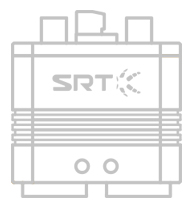01
Product introduction

The structure of the SRT hand mirror rehabilitation trainer (upgraded version) is ergonomic, and the trainer adopts a semi-open package design. Passive training helps maintain and expand the patient's range of motion, relieve and control increased muscle tone, and prevent joint contractures. Mirror training uses visual feedback therapy. Through the synchronous training of the unaffected and affected hands, it can stimulate the mirror neurons of the brain and directly improve symptoms such as finger spasm and weakness. Wrist lift training uses electrical stimulation therapy to extend the training range from the fingers to the wrist. The three major modes help train the reflex brain nerves and blood vessels, enhance the effect of conservative treatment after brain injury or nerve injury, shorten the rehabilitation period after surgery, and help achieve the goals of enhancing patients' confidence in rehabilitation, restoring the function of the affected limb, and improving the quality of life.
02
Current status of hand function rehabilitation
Hand function is an important part of activities of daily living. Due to hand dysfunction, patients are limited in activities of daily living and rely on the help of others, which greatly affects their physical and mental health. Therefore, it is particularly important to improve the patient's hand function.
Taking stroke as an example, patients with hand dysfunction often have flexion contractures, with dominant hand flexor tension and difficulty in extending the interphalangeal and metacarpophalangeal joints. Therefore, spasticity is the main problem of early hand function training, and the rehabilitation treatment mainly adopts the method of passively suppressing spasticity.

03
Pain points of traditional rehabilitation methods
At
present, when clinical therapists carry out rehabilitation training for
patients, they often conduct one-to-one training with patients hand in
hand. This training method needs to go to a professional rehabilitation
institution, but some patients in remote areas lack medical resources
around them. Moreover, the therapeutic effect is relatively dependent on
the therapist, and the cost is high; secondly, it is difficult to
mobilize the enthusiasm of patients for training with a single training
method, and patients often receive treatment passively, and the degree
of active participation in training is not high.
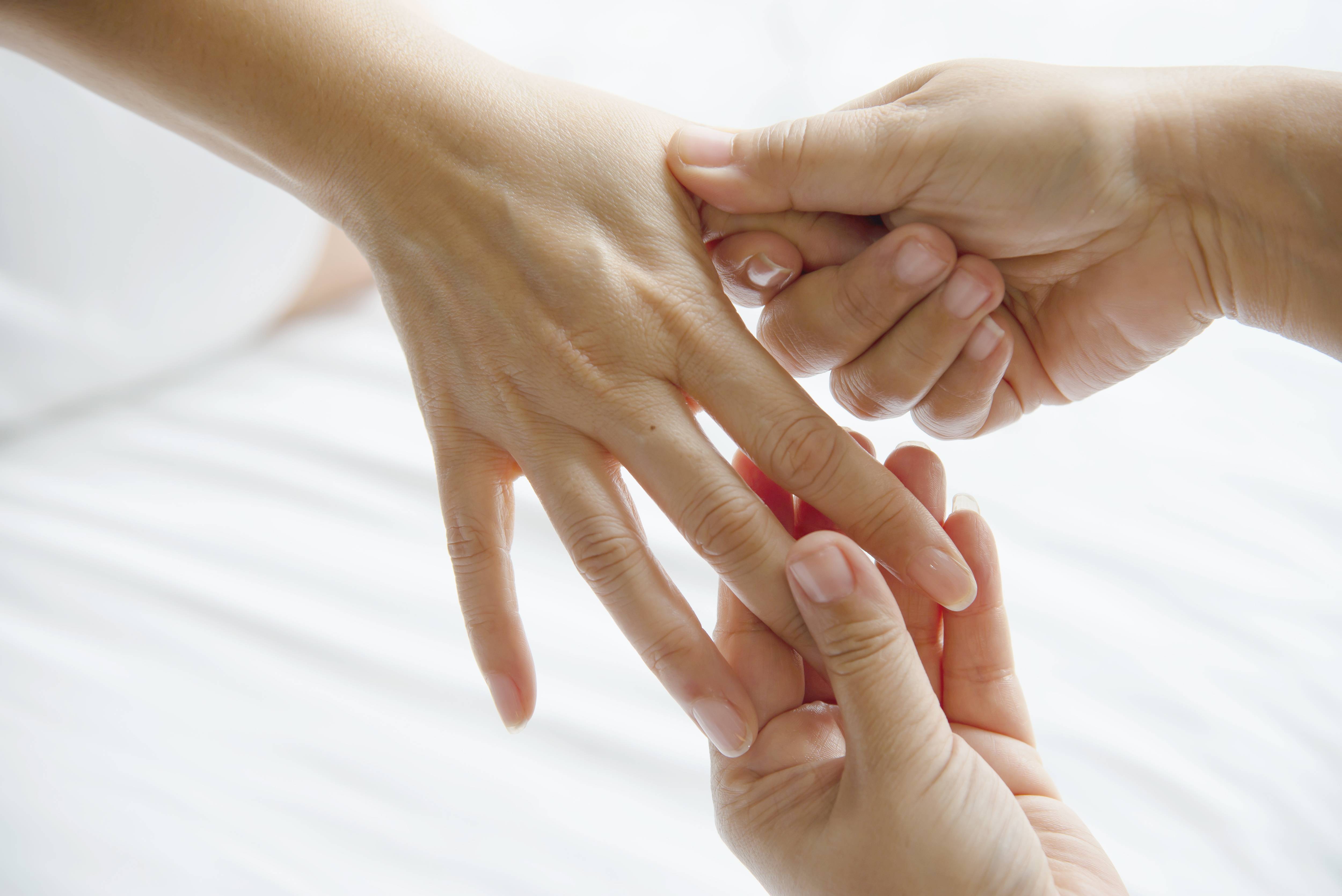
04
Innovative breakthrough
The hand mirror rehabilitation trainer helps patients reduce the requirements for the rehabilitation environment, so that patients can carry out scientific rehabilitation training at home, and passive training helps to expand the range of motion of joints and improve muscle spasm. The innovative mirror therapy uses the unaffected hand to drive the movement of the affected hand to achieve synchronization of vision and movement. Activate mirror neurons to promote brain function remodeling. Functional electrical stimulation therapy stimulates muscles and afferent nerves, expands the range of motion, and accelerates functional recovery. The efficient operation mode helps patients to complete the training easily, and has excellent training effect while being extremely cost-effective.
passive training
The
passive training mode is a mode in which the device drives the affected
hand to perform flexion and extension training. Passive training can
effectively prevent contractures of the affected hand, avoid the disuse
effect, improve the range of motion of the joints, and reduce muscle
tension.
mirror training
The
mirror training mode is a mode in which the patient wears mirror gloves
and drives the affected hand to perform synchronous movement through
the unaffected hand. Mirror training can effectively stimulate the
mirror neurons of patients, improve the active participation of
patients, promote the remodeling of brain function, and induce the
recovery of motor function of the affected hand.
wrist lift
After
the patient pastes and connects the electrode pads on the corresponding
position of the affected arm, the device performs low-frequency
discharge to raise the wrist of the affected hand. Wrist lift training
can be carried out at the same time as passive training to help patients
improve the range of motion of the affected hand, expand the training
range, improve the training effect, and promote the appearance of
separation movement.
05
Features
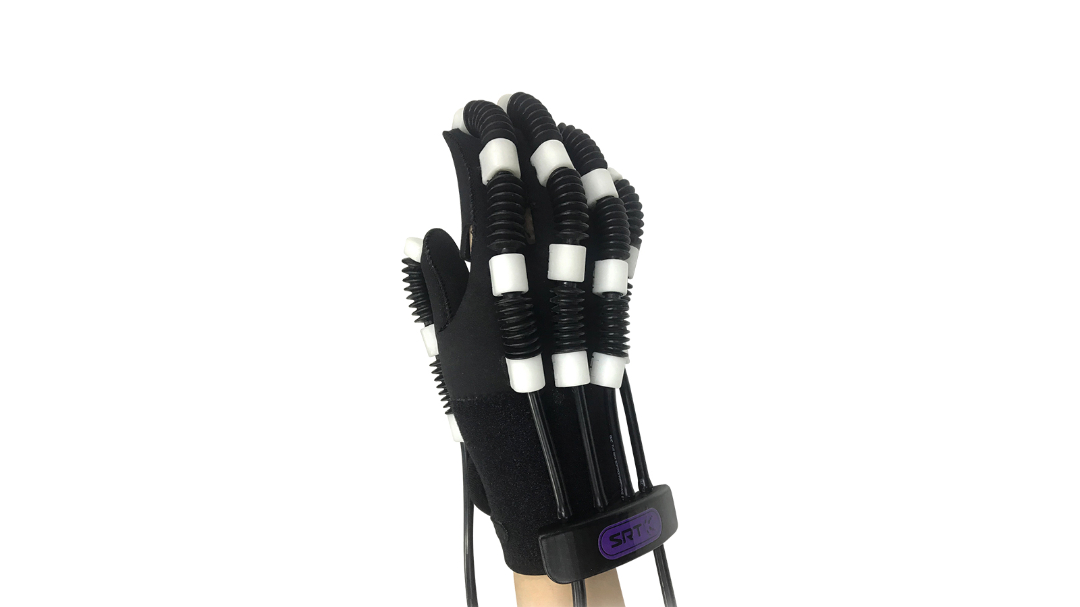
Simulate the way of muscle driving to avoid secondary injury
The
drive module simulates the mechanism of human kinematics, and the
position of the anatomical joints of the hand is modest to avoid
secondary injury.
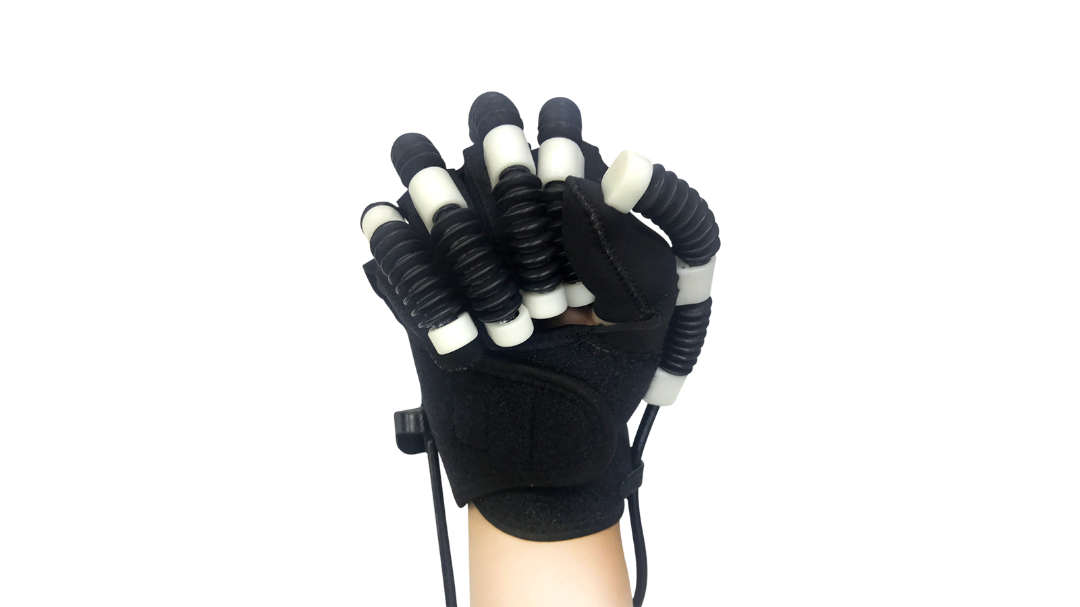
Passive training mode to improve joint mobility
The device controls the whole hand to grasp and stretch, promote muscle recovery, and improve joint mobility.
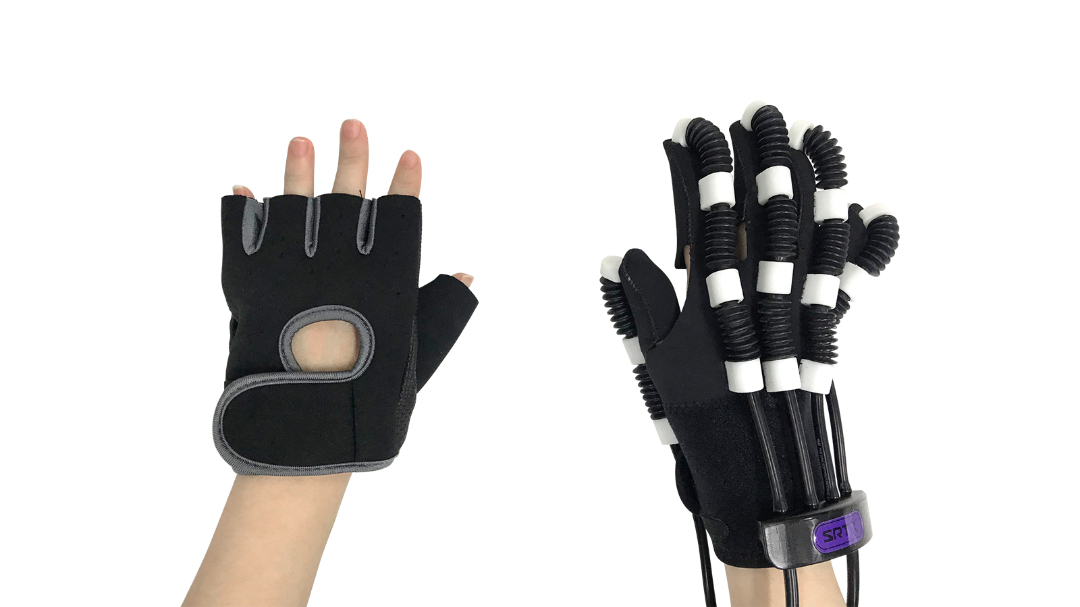
Mirror training mode stimulates neural recovery
The
movement pattern of the unaffected hand is mapped to the affected hand,
and the mirror neurons of the brain are stimulated through vision and
sensation, which induces the recovery of the motor function of the
affected hand.
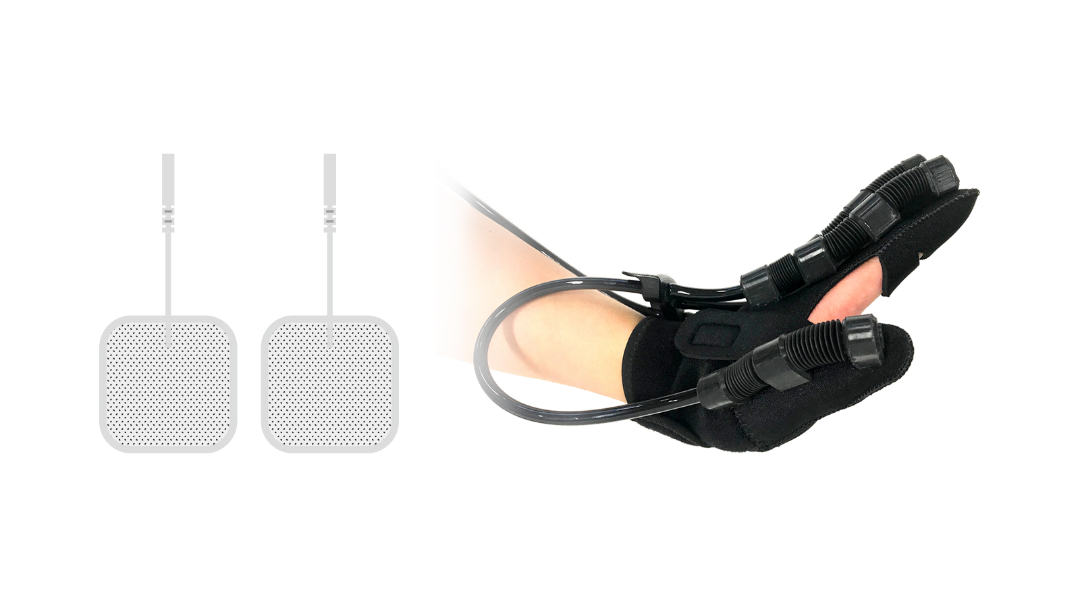
Electrical Stimulation Wrist Raise to Promote Separation Movement
The
low-frequency pulse current can stimulate the peripheral nerves and
muscles, make them contract, and drive the wrist to lift to restore the
motor function. With the pneumatic training gloves, it can promote the
appearance of hand separation.

